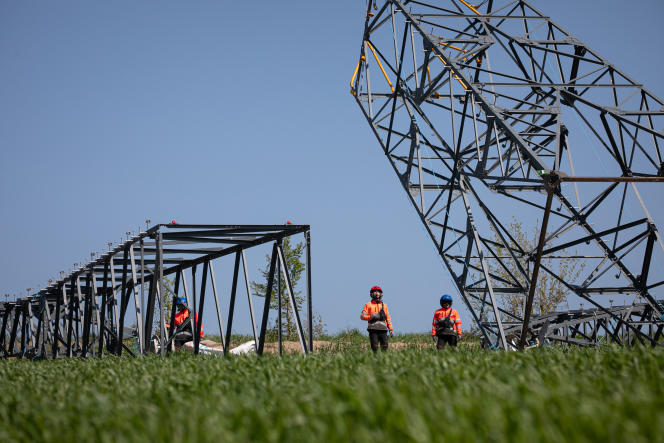The discourse is intended to be less alarmist. In 2022, the government was openly considering targeted power cuts of less than two hours in French homes to avoid a general breakdown in electricity supply, “The year 2023 sees the situation improve markedly and gradually get closer to normal”summarizes the national operator of the electricity transmission network (RTE).
In its inventory of France, presented on Wednesday June 28, RTE does not distinguish between “no particular concern in terms of security of supply” for the current summer. Neither of “specific risk” for the fall, unlike last year. The situation of the coming winter, when it comes to heating, is also announced “significantly more favorable” than that of the previous one. Winter risk analysis “will be refined in the fall”in particular according to “keeping nuclear reactor outage schedules for maintenance and repairs”.
Many sighted people have seen improvement in recent months. This is the case of the nuclear fleet, the main electricity source in the country. Since the first half of the year, several reactors have resumed service. A phenomenon of corrosion on certain pipes, detected in the fall of 2021, had forced shutdowns for repairs or checks. The four most powerful reactors have now restarted, in Chooz (Ardennes) as in Civaux (Vienne). For its fifty-six units, the EDF group expects production of 300 to 330 terawatt hours (TWh) in 2023. That is more than in 2022 (279 TWh, lowest total since 1988), but still well below the average of the last two decades (402 TWh), mainly due to maintenance operations.
Supply up, demand down
Progress can also be observed in hydraulic stocks, after a year 2022 marked by a severe drought and hydroelectric production at its lowest since 1976. Their level is higher than the average for the period 2015-2021. Similar observation for gas storages: their filling is also, for the time being, higher than the average of the last five years. Which is not anecdotal, as Europe has been trying to reduce its dependence on Russian gas supplies since the start of the war in Ukraine.
In addition, the connection of new renewable electricity capacities contributes to the balance of the network. After that of Saint-Nazaire (Loire-Atlantique), in 2022, two new wind farms at sea are also supposed to start in 2023, off Saint-Brieuc (Côtes-d’Armor) and Fécamp (Seine -Maritime). Each will have an output of nearly 500 megawatts. This is equivalent to about half of a nuclear reactor, except that the effective performance of wind power varies according to the weather.
You have 48.94% of this article left to read. The following is for subscribers only.
